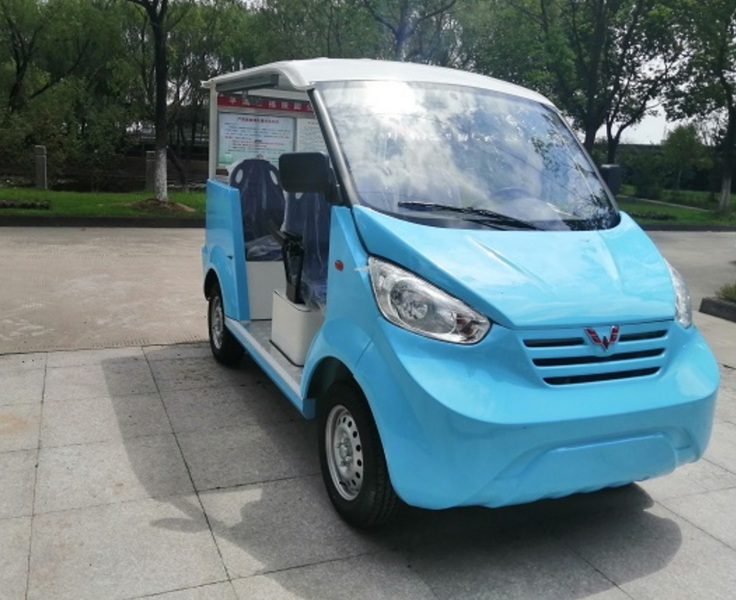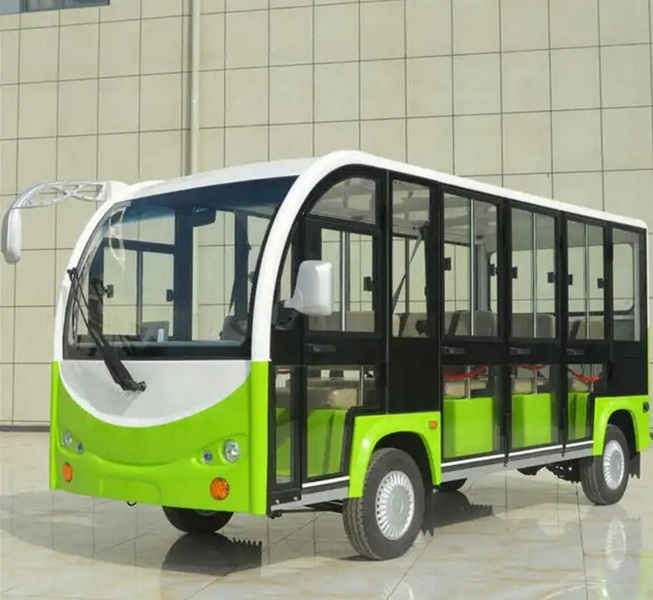Content Menu
● Passenger Capacity and Seating Comfort
● Eco-Friendly and Quiet Operation
● Battery Life and Charging Efficiency
● Safety Features
● Customization Options
● Terrain Capability and Speed
● Ease of Use and Maintenance
● Additional Comfort and Convenience Features
● Durability and Weather Resistance
● Cost Considerations and Warranty
● Integration with Fleet Management Systems
● Conclusion
● FAQ
>> 1. What is the typical passenger capacity range for electric sightseeing carts?
>> 2. How long does the battery last on a fully charged electric sightseeing cart?
>> 3. Are electric sightseeing carts safe to operate in crowded areas?
>> 4. Can I customize the design and features of my electric sightseeing cart?
>> 5. What terrains can electric sightseeing carts handle?
Electric sightseeing carts have become increasingly popular in tourism, hospitality, and entertainment industries due to their eco-friendliness, convenience, and versatility. Choosing the right electric sightseeing cart can significantly enhance the visitor experience while optimizing operational efficiency. This comprehensive guide explores the top features to consider when selecting an electric sightseeing cart, helping you make an informed decision tailored to your specific needs.

Passenger Capacity and Seating Comfort
One of the foremost considerations is the passenger capacity of the cart. Depending on the size of your group or venue, you may need a cart that seats anywhere from 2 to over 20 passengers. Smaller carts, such as 2-4 seat models, are ideal for intimate tours or personal use, while larger carts with 14 or more seats are suited for group tours or shuttle services in resorts and amusement parks.
Comfortable seating with ergonomic design and quality cushioning is essential to ensure a pleasant ride. Features like adjustable seats, armrests, and ample legroom contribute to passenger comfort during longer tours or rides. Some models also offer customizable seating configurations to accommodate different group sizes and needs. Additionally, weather-resistant upholstery materials help maintain seat quality and comfort over time, especially in outdoor environments.
Eco-Friendly and Quiet Operation
Electric sightseeing carts run on electric power, producing zero emissions and significantly reducing noise pollution compared to gas-powered vehicles. This makes them ideal for nature reserves, historical sites, and urban areas where preserving the environment and ambiance is crucial.
The whisper-quiet operation allows passengers to enjoy the surroundings without the distraction of engine noise, enhancing the sightseeing experience. Additionally, electric carts contribute to sustainability goals and can improve the public image of businesses that prioritize green transportation.
Moreover, many electric sightseeing carts utilize regenerative braking systems that help recharge the battery during deceleration, extending battery life and improving energy efficiency. This technology not only reduces environmental impact but also lowers operating costs over time.
Battery Life and Charging Efficiency
A critical technical feature is the battery system. Look for carts equipped with high-capacity, maintenance-free batteries such as Trojan or lithium-ion batteries, which offer longer life, faster charging times, and better reliability.
Battery capacity directly affects the cart's range and operating time, which is vital for uninterrupted tours or shuttle services. Some models offer options between lead-acid and lithium batteries, allowing buyers to choose based on budget and performance needs.
In addition to battery type, consider the charging infrastructure. Some carts support fast-charging technology, enabling batteries to be charged up to 80% capacity in under an hour. This feature is especially beneficial for businesses with high utilization rates or multiple shifts.
Battery management systems (BMS) integrated into modern carts monitor battery health, temperature, and charge cycles, providing alerts to prevent overcharging or deep discharging, thereby prolonging battery lifespan and ensuring safety.
Safety Features
Safety is paramount in electric sightseeing carts, especially when transporting multiple passengers. Key safety features to look for include:
- Dual braking systems combining electronic motor brakes (EMB) and mechanical brakes for reliable stopping power.
- Electronic power steering for easier and more precise maneuvering.
- Backup cameras and reverse buzzers to assist drivers in crowded or tight spaces.
- Sturdy construction with corrosion-resistant materials and high-strength chassis to ensure durability and passenger protection.
- LED lighting systems for enhanced visibility during low-light conditions or nighttime operation.
- Seat belts for all passengers, which are increasingly becoming standard in many models to enhance passenger safety.
- Speed governors to limit maximum speed, ensuring safe operation in pedestrian-heavy areas.
- Non-slip flooring to prevent passenger slips and falls during boarding or disembarking.
In addition, some advanced models include telematics systems that allow fleet managers to monitor vehicle location, speed, and driver behavior in real-time, further enhancing safety and operational control.
Customization Options
Personalization is a significant advantage of modern electric sightseeing carts. Many manufacturers offer customization in:
- Color schemes to match branding or aesthetic preferences.
- Seating arrangements to fit different passenger capacities.
- Additional accessories such as canopies, windshields, storage compartments, and audio systems.
- Themed designs for special events or marketing purposes.
- Lighting packages, including ambient LED lights or spotlighting for nighttime tours.
- Climate control options such as fans, heaters, or enclosed cabins for comfort in various weather conditions.
Customization allows businesses to create a unique identity and optimize the cart's functionality for their specific environment. For example, resorts may opt for luxury finishes and plush seating, while eco-tourism operators might emphasize sustainable materials and minimalist design.
Terrain Capability and Speed
Electric sightseeing carts are designed for low-speed performance suitable for pedestrian areas, parks, resorts, and urban sightseeing routes. Typical maximum speeds range around 25-28 km/h (15-17 mph), providing a safe yet efficient pace for sightseeing.
Versatility in terrain handling is important; carts should be capable of navigating smooth pavements as well as slightly uneven or rougher paths found in parks or resorts. This expands their usability across various settings.
Some carts come equipped with enhanced suspension systems that absorb shocks and vibrations, improving ride quality on bumpy or uneven terrain. Additionally, models with four-wheel drive (4WD) or all-terrain tires can handle grass, gravel, or mild off-road conditions, making them suitable for golf courses, vineyards, or large outdoor venues.

Ease of Use and Maintenance
Ease of operation is essential, especially for drivers who may not have extensive vehicle experience. Features such as simple pedal controls (go/stop), electronic power steering, and clear dashboard displays make driving intuitive.
Maintenance requirements should be minimal. Electric carts have fewer moving parts than gas vehicles, leading to lower maintenance costs and longer lifespans. Look for models with maintenance-free batteries and durable components to reduce downtime.
Many manufacturers provide modular components that simplify repairs and part replacements, reducing service time and costs. Additionally, some carts come with onboard diagnostics that alert operators to potential issues before they become serious problems.
Routine maintenance typically involves checking battery health, tire pressure, brake function, and electrical systems. Having access to a reliable service network or manufacturer support is beneficial for ongoing maintenance and warranty coverage.
Additional Comfort and Convenience Features
To enhance the passenger experience, consider carts with:
- Climate protection such as canopies or enclosed cabins that shield passengers from sun, rain, or wind.
- Audio and communication systems for guided tours, including microphones, speakers, and wireless connectivity.
- USB charging ports for passenger devices, enabling guests to stay connected or capture memories during the ride.
- Storage space for luggage, picnic baskets, or personal items, which is especially useful for longer tours or shuttle services.
- Cup holders and armrests to improve passenger comfort.
- Adjustable lighting inside the cabin for evening or nighttime rides.
Some carts also feature fold-down seats or removable benches, allowing operators to switch between passenger and cargo configurations as needed.
Durability and Weather Resistance
Given that sightseeing carts often operate outdoors, durability and weather resistance are crucial. Look for carts constructed with:
- Corrosion-resistant frames made from aluminum or powder-coated steel.
- UV-resistant materials to prevent fading and degradation from sunlight exposure.
- Waterproof electrical components to ensure reliable operation in rainy or humid conditions.
- Heavy-duty tires designed to withstand frequent use on various surfaces.
These features ensure longevity and reduce the need for frequent repairs or replacements, making the cart a sound investment.
Cost Considerations and Warranty
While selecting an electric sightseeing cart, consider not only the upfront purchase price but also the total cost of ownership, including maintenance, battery replacement, and energy costs.
Many manufacturers offer warranty packages covering batteries, motors, and structural components, providing peace of mind and financial protection. Extended warranties or service contracts may be available for added security.
Additionally, some regions offer tax incentives or subsidies for electric vehicles, which can help offset initial costs.
Integration with Fleet Management Systems
For businesses operating multiple carts, integration with fleet management software can optimize operations. Features include:
- Real-time tracking and monitoring.
- Usage analytics and maintenance scheduling.
- Driver performance monitoring.
- Remote diagnostics and software updates.
Such systems improve efficiency, reduce downtime, and enhance safety across the fleet.
Conclusion
Selecting the right electric sightseeing cart involves balancing passenger capacity, comfort, eco-friendliness, safety, and customization. Prioritize carts with reliable battery systems, robust safety features, and versatile terrain handling to ensure a smooth, enjoyable, and safe ride. Customization options allow you to tailor the cart to your brand and operational needs, while quiet, emission-free operation aligns with sustainability goals. Additional features such as multimedia enhancements, weather resistance, and fleet management integration further elevate the sightseeing experience and operational efficiency. By carefully evaluating these top features, businesses can enhance their service offerings and provide memorable sightseeing experiences that delight customers and support sustainable practices.

FAQ
1. What is the typical passenger capacity range for electric sightseeing carts?
Electric sightseeing carts typically range from 2-seat models for personal use to over 20 seats for group tours or shuttle services, allowing flexibility based on your specific needs.
2. How long does the battery last on a fully charged electric sightseeing cart?
Battery life varies by model and battery type, but high-quality lithium or Trojan batteries can provide several hours of continuous operation, suitable for full-day tours or multiple shuttle runs.
3. Are electric sightseeing carts safe to operate in crowded areas?
Yes, they are designed with safety features like dual braking systems, electronic power steering, backup cameras, and low maximum speeds to ensure safe operation in crowded or pedestrian-heavy environments.
4. Can I customize the design and features of my electric sightseeing cart?
Most manufacturers offer extensive customization options including seating capacity, colors, accessories like canopies and audio systems, and even themed designs to match your brand or event requirements.
5. What terrains can electric sightseeing carts handle?
They are optimized for smooth pavements and can handle slightly rougher terrains such as park paths and resort grounds, making them versatile for various sightseeing environments.










































